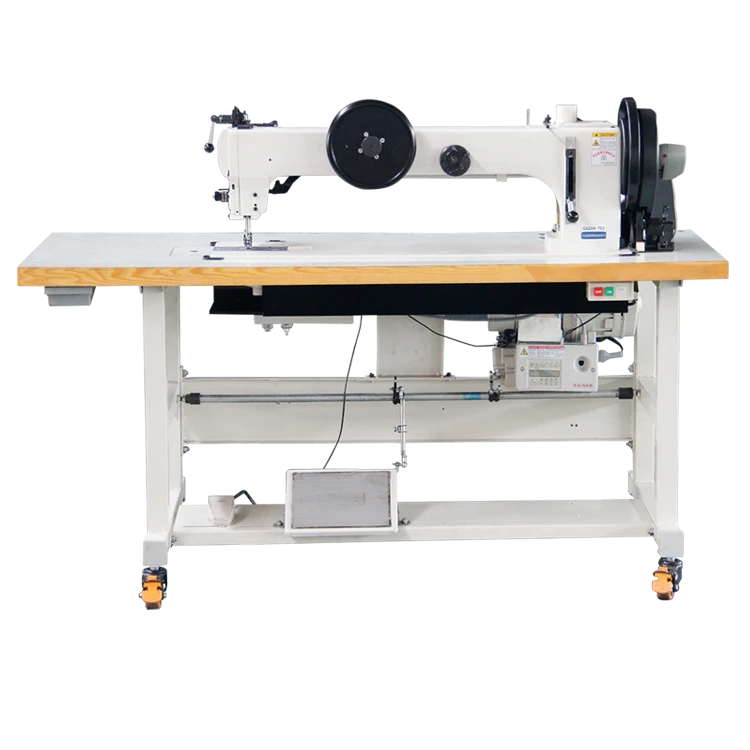Essential Components for Leather Sewing Machines and Their Functions
Understanding Leather Sewing Machine Parts A Guide for Enthusiasts
Leather crafting has become a popular hobby for many, thanks to its versatility and the beauty of the finished products. Whether you are making handbags, wallets, or other leather goods, having the right tools is essential. One such tool that stands out in the leather crafting world is the leather sewing machine. This article provides an overview of the various parts of a leather sewing machine and their roles, enhancing your understanding and efficiency in leatherwork.
1. Stitching Mechanism
At the heart of every leather sewing machine is the stitching mechanism. This assembly typically includes the needle, the bobbin, and the feed dogs. The needle penetrates the leather, while the bobbin provides the thread loop that creates a stable stitch. When choosing a needle for leatherwork, it is crucial to consider different types such as round point or leather point needles. A leather point needle has a tapered point that easily punctures the leather without damaging its fibers, ensuring a clean stitch.
2. Bobbin Case
The bobbin case holds the bobbin securely in place and ensures consistent tension. It is essential to choose a quality bobbin case that matches the specific type of sewing machine to avoid issues like thread snapping. The placement and threading of the bobbin are crucial for smooth operation, especially when working with thicker leather, which may require different tension settings.
3. Presser Foot
The presser foot of a leather sewing machine plays a critical role in holding the leather in place as you sew. There are various types of presser feet designed for different stitches and leather thicknesses. For example, a walking foot can be particularly useful for thicker hides as it helps to move the leather evenly without causing misalignment. The right presser foot can significantly affect the quality of the stitch and ease of handling.
4. Feed Dogs
Feed dogs are essential parts that move the leather through the sewing machine. Positioned beneath the presser foot, they grip the material and feed it forward as you sew. For leather working, it may be necessary to adjust the feed dogs to accommodate varying thicknesses and ensure an even feeding of the material. Some machines offer the option to disengage the feed dogs allowing for free motion sewing, which can give creative freedom when crafting designs.
leather sewing machine parts

5. Throat Plate
The throat plate serves multiple purposes; it helps guide the leather material while protecting the sewing machine's internal mechanisms from dust and debris. It features various markings to help you maintain consistent stitch lengths and seam allowances. A sturdy throat plate is particularly important when working with heavier leathers; a flimsy one could warp and negatively affect the stitching process.
6. Tension Assembly
The tension assembly on a leather sewing machine is responsible for regulating the tension of the thread as it feeds from the spool to the needle. Proper thread tension is vital for achieving perfect stitches. If the tension is too loose, you may find that stitches are uneven or that the thread breaks under stress. Conversely, if the tension is too tight, it can lead to puckering in the leather. Adjusting the tension appropriately for the type of leather being used is an important skill every leatherworker should master.
7. Motor
The motor provides the necessary power to the sewing machine. High-speed motors enable quicker sewing but can sometimes make it difficult to have precise control, especially on intricate designs. Leather sewing machines may vary in motor power, which can affect your project based on the weight of the leather and the complexity of the stitch.
8. Work Table
The work table, where all your crafting takes place, must be sturdy and spacious enough to hold the leather as it feeds through the machine. Some machines come with extensions or have a flatbed style, providing additional workspace, which is particularly useful when sewing larger leather pieces.
Conclusion
Understanding the various parts of a leather sewing machine equips you with the knowledge to enhance your crafting skills. Each component plays an integral role in the stitching process, and knowing how they work together will help you create beautiful, high-quality leather goods. Whether you are a novice or a seasoned crafter, investing time in learning about your sewing machine will make your leather crafting experience more enjoyable and efficient. Happy sewing!
-
Boost Production Efficiency with a Pattern Sewing MachineNewsAug.29,2025
-
Industrial Excellence with the Best Heavy Duty Sewing MachineNewsAug.29,2025
-
Precision and Power with the Best Pattern Sewing MachineNewsAug.29,2025
-
Reliable Bulk Packaging Starts With the Right FIBC Sewing MachineNewsAug.29,2025
-
Advanced Packaging Solutions: Elevate Productivity with Jumbo Bag Sewing Machine and Industrial Stitching EquipmentNewsAug.29,2025
-
High-Performance Solutions for Bulk Packaging: FIBC Sewing Machine and MoreNewsAug.29,2025
-
Maximize Efficiency with an Industrial Cylinder Arm Sewing MachineNewsAug.28,2025


























